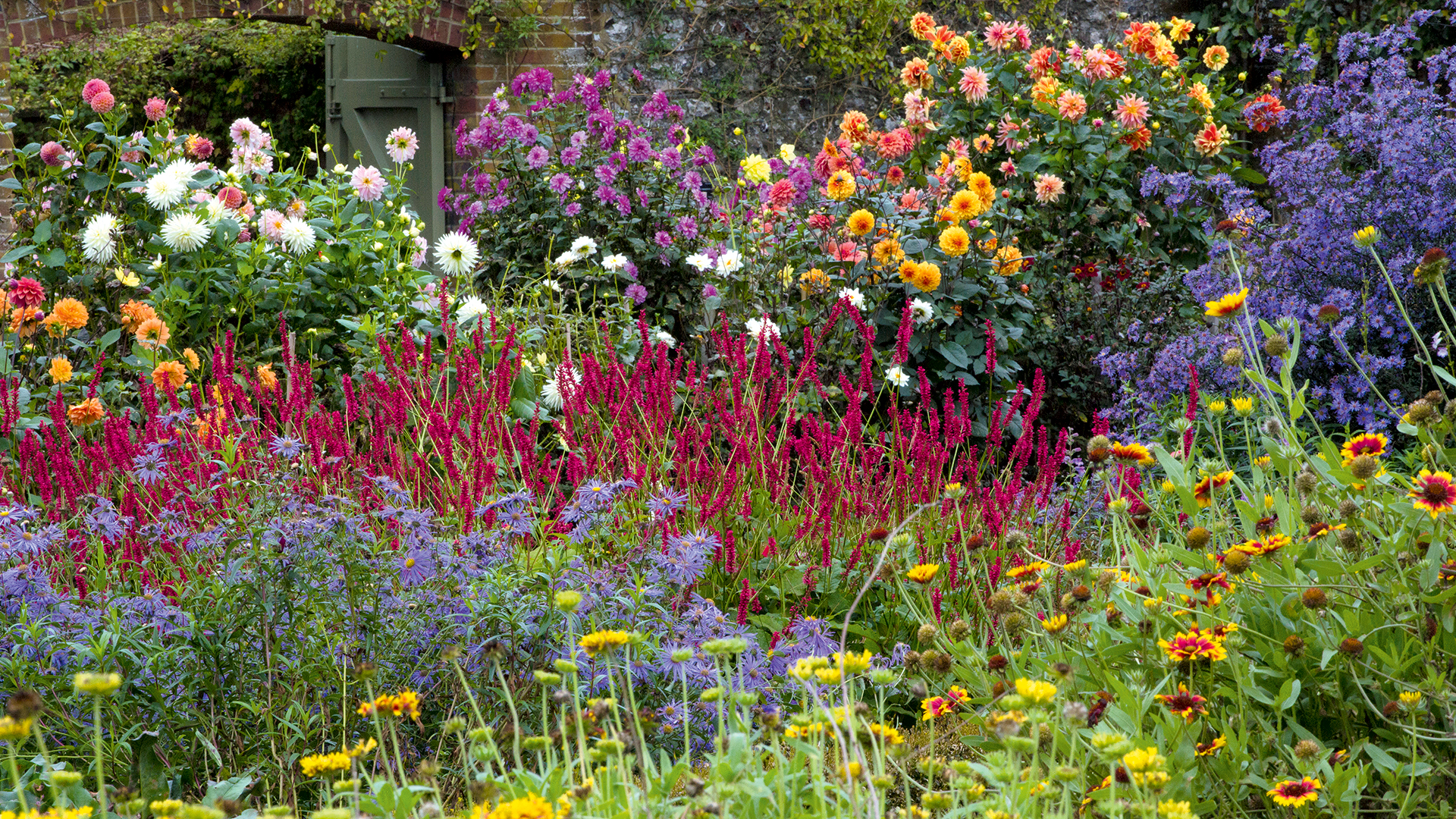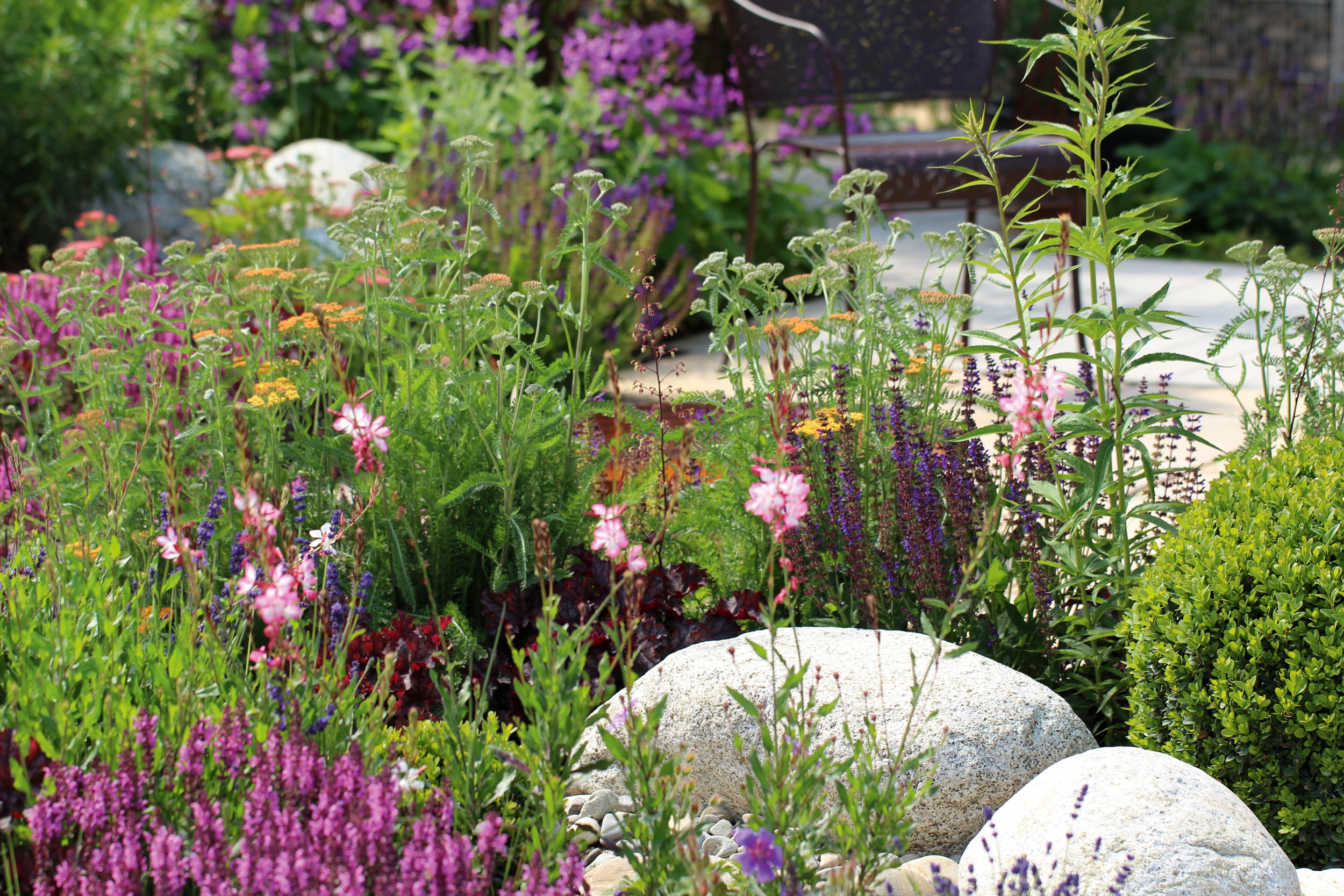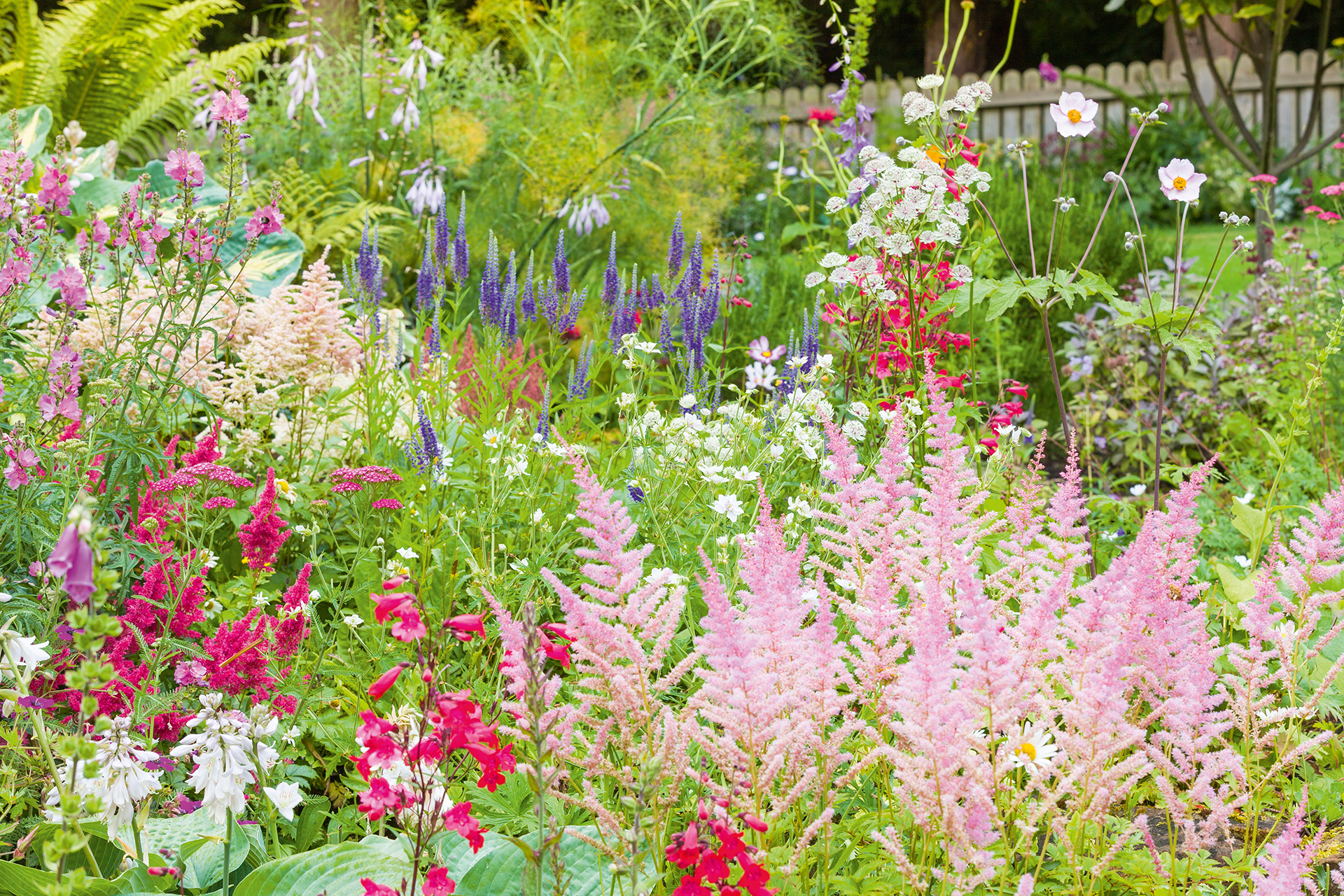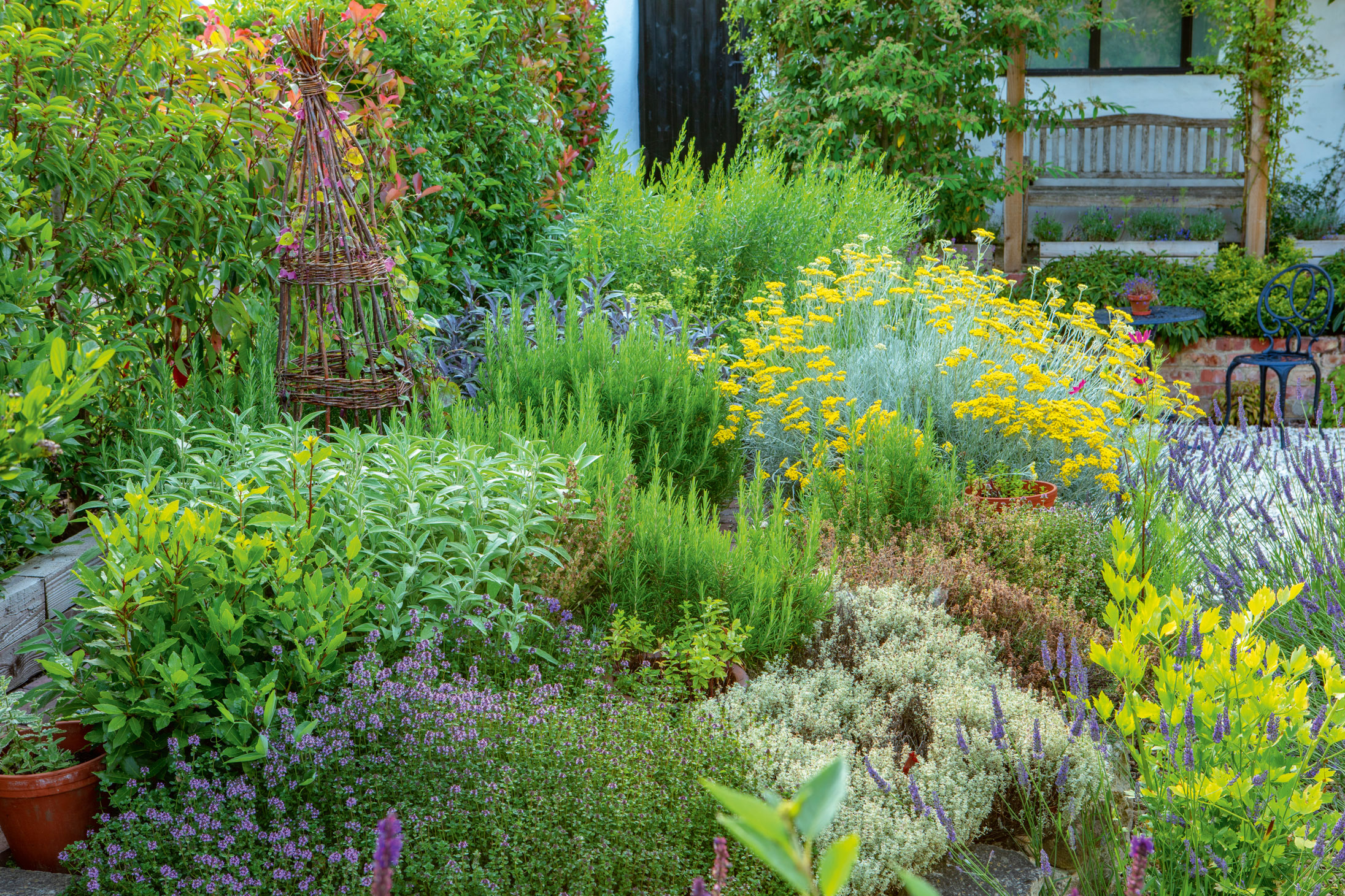
'Chaos gardening' is a term that has been widely talked about since the UK's famous Chelsea Flower Show earlier in summer. But what is chaos gardening, and should you embrace this new garden trend?
In short, chaos gardening can be described as purposeful disorganization: you simply gather up unused seeds and plants, scatter them randomly and see what takes. If done correctly, chaos gardening can create the effect of a wild, natural cottage garden which can be more enchanting than overly structured flower beds. Think of it as pressing shuffle on your plant beds.
'I saw some gorgeous examples of chaos gardens at Chelsea Flower Show in London this year,' says Lucy Searle, Homes & Gardens' Editor in Chief. 'Cottage gardens plants are, of course, flushed with a range of colors and textures, and are amongst the best plants for pollinators. Whether you want to dedicating your entire yard, a corner of your garden or fill in some empty patches, the chaos gardening technique can be a low-effort, lovely way to do so.'
Here, we look at the techniques, pros and cons of chaos gardening.
How to do chaos gardening?

Chaos gardening is certainly one of the easiest and most low-maintenance garden border idea, and is a great practical use for all your spare seeds or the seeds you are planning to harvest from your flowers.
Simply combine a wide range of seeds – they don't even need to be all flower seeds, you can also use seeds for herbs, grasses, vegetables, fruit or whatever you have lying around. Mix them around and scatter them on your allotted garden space.
The results should create an effortlessly breath-taking natural garden space, brimming with color, texture and smells that will attract bees and attract butterflies to your garden.
Chaos gardening can be perfect for gardening amateurs, and to make it even easier, find some of the best plants for beginners to make planting and tending to your garden simple.
'While chaos may sound like "anything-goes" it still pays to plan your ideals for the space, whether in terms of color, purpose, or management. There is no one-size-fits-all when it comes to gardening and each packet of seed in your possession will have slightly different likes and dislikes,' says H&G's garden expert Drew Swainston.
'Either dedicate a small section to chaos gardening as an experiment, or do lots of different zones with a bespoke mix for each, rather than dedicating a large space for this style straight off the bat.'
There are a few different techniques you can put into practice when chaos gardening. Although you can simply combine and spread your seeds without a second thought, you may also want to plan out your chaos garden a bit more.
How to 'plan' your chaos garden

Plan zones
While chaos gardening is all about creating a natural look, you can plan certain zones where you want particular flowers or plants to dominate and randomly plant the rest elsewhere.
'Think of the combinations of height, spread, and color that will work and look good, and make little mixes of complementary blends of plants to spread around together. Planned mixes of seeds for different zones of the garden are more likely to guarantee success than blindly emptying packets of seed around,' says Drew Swainston.
Plan a color scheme
You could also be particular about the tones and colors or heights of plants you want to use, such as choosing to chaos plant a selection of plants with complementary or layered heights, textures and colors. This is a great way to introduce a garden color scheme.
Work around a hard landscaped structure
Finally, you may consider structuring the garden beds by using hardscaping features such as a rock garden, a container garden, water features or simply hanging baskets to create zones.
Embrace weeds
Chaos gardening also, involves embracing weeds (within reason), provided you deem them pretty enough. Dandelions were proudly featured amongst some gardens in the RHS Chelsea Flower Show.
The pros and cons of chaos gardening

It's low maintenance
Planting out seeds, nurturing seedlings then transferring them to borders is time-consuming. Chaos gardening skips those stages and, because of the style of borders it's aimed at creating, you don't have to plan in lots of maintenance and upkeep.
It's great for bio-diversity
Pollinator-friendly, it's as close to rewilding as many gardeners want to get.
But...
It's not no-maintenance
Although this is certainly a low maintenance way to garden, it is slightly different to rewilding which emphasizes letting nature completely take its course. You don't want to lose control of the flowers' growth entirely, for example if you are letting dandelions grow in your chaos garden, be aware they are quite successful at multiplying and are very resilient, so they can take over if you don't keep them in check.
Additionally, some plants may dominate the space is they aren't controlled which can counter the all-inclusive display you were planning.
Your chaos will need to be selective
This means you may want to be somewhat selective about what proportions of various seeds you put into the mix. If you want a lot of colorful flowers and fewer grassy or weedy plants then make sure you have thought ahead.
Some seeds will be wasted
Another thing to consider is that the seeds you are planting need to be equipped to deal with your local environment, including the type of soil you are sowing them in and the climate. Otherwise, it's likely they won't take and you'll be left with bare patches.

Watering might be tricky
Chaos gardens also make watering a bit more tricky. Since most plants have different watering needs and can suffer if they are under or overwatered, the general rule with chaos gardens is to water them at regular intervals, and to only water them a small amount.
'Make sure to scatter types that like the same soil or the same level of watering, this will make things easier in the long run and hopefully guarantee a display. Mix moisture-loving plants with ones that like it dry and you are more than likely to sufficiently satisfy either,' advises Drew Swainston.
Fertilizing will be tricky, too
You should also do the same with fertilizing. As always, pay attention to how your plants respond to how much water they are receiving – you may have to reassess if they are looking wilted.
One top trick: if you are worried about caring for a whole range of plants with different needs is to group those with similar water requirements and growing habits, which may make it a bit easier to provide them with the proper care.
Plants might get overcrowded
A potential downside of chaos gardening is you will need to make sure the plants aren't suffering due to a potential overcrowding. Plants need good circulation to promote water evaporation to reduce the risk of fungal infections. Plus, if plants are growing over one another some may not receive the light and water they need. You should, therefore, monitor the plants to make sure they all have space to thrive and to remove any infected plants.
FAQs
How can you create a chaos vegetable garden?
To create a chaos vegetable garden gather your annual vegetable seeds, mix them together and spread them over your vegetable patch. Then rake them into the ground to reduce the risk that birds and insects will consume them before they get to grow. We recommend this Anvil 14-Tines Garden Bow Rake from Walmart for this job.
With chaos vegetable gardens, be sure to research before planting which vegetables and flowers should be grown together as companion plants. Companion plants will be mutually beneficial when grown together. To get you started, we have helpful features on: cucumber companion planting, pepper companion planting, potato companion planting, and onion companion planting.
Whether your chaos garden is the main showpiece in your yard or it's just a pretty low maintenance garden border, this is a truly inspiring gardening idea.
Chaos gardening should also add versatility to the layout of your plants, but also, over time, you'll find the whole appearance of your garden will transform and evolve. This is because many of the plants you will have in your chaos garden will have different germination rates and will grow at different speeds. The plants create a self-sustaining ecosystem, and hopefully many of them will naturally reseed themselves.







